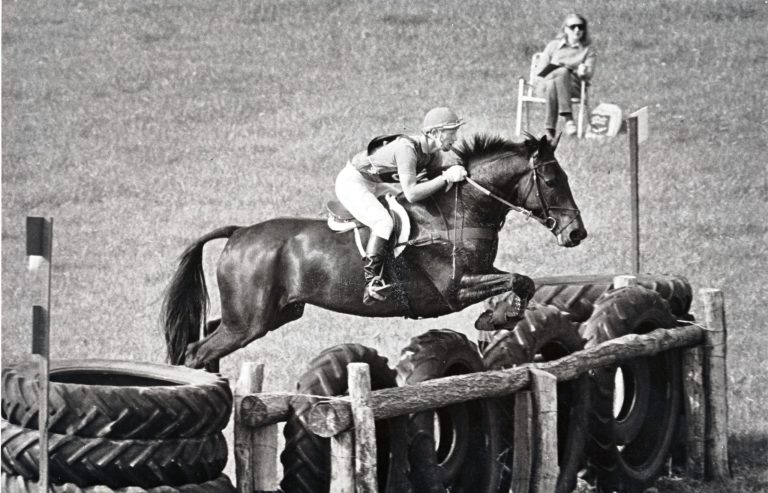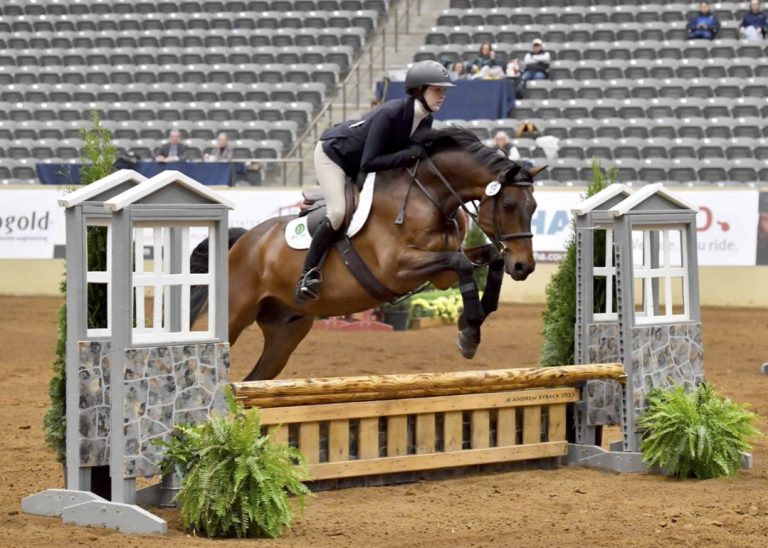Do fears of having forgotten to pack something important keep you up the night before a competition? Whether you’re heading to a one-day or multiday show, it may feel impossible to keep track of all the tack, equipment and clothing required. That’s why checklists are a lifesaver.

We asked three top grooms to explain how to create and use effective pre-competition checklists: Olympic event groom and co-author of World-Class Grooming for Horses Emma Ford, Professional Equine Grooms founder Liv Gude and veteran U.S. Equestrian Team groom Laurie Pitts, who currently works for international jumper Kama Godek. They agree that checklists make life easier for almost everyone. “If you’re like me,” says Liv, “I can’t remember what I had for breakfast! So, stash a copy of your checklist somewhere handy in your barn or keep a digital copy on your phone.”
Liv, Laurie and Emma’s checklists for one-day dressage and hunter/jumper competitions can be found at the end of this article in PDF form. Along with this master list, eventers will need additional items for the cross-country phase, and those are also at the end of the article. Also is a list of items that you might need if you are planning to braid your horse at the show, wrap his legs, etc. You make copies or laminate them to make them last longer. You likely won’t need every item on these lists. Some are optional. For example, typically, only upper-level eventers need grease in their cross-country kits. So with the lists, add and subtract items to suit your specific situation.
Once you’re set with your list and have laminated it, you can check off items with a dry-erase marker, if you like. Or keep a copy in a clear plastic sleeve, so you can easily replace it whenever it needs updating. Store an electronic copy of your master checklist on your computer, tablet or smartphone. Emma uses Google Drive (one of several cloud storage devices) so she can access it anywhere from any device. If you’re even more tech-savvy, consider creating your checklist with a “to-do list” or “task tracker” template on Google Sheets or Microsoft Excel—or use a task-management app like Todoist.
Personalize Your Checklist
To design the best checklist for your specific needs, says Laurie, “picture your entire day, minute by minute, from the moment you get to the barn. What are you doing and what do you need to do it? If the first thing you do when you arrive at the barn is feed hay, you’ll need something to cut the twine with, maybe something to carry the hay with and something to cover up the remaining hay.” Apply this same planning method to every moment of every day of the competition.
“You never know you need something until you don’t have it,” adds Liv. That’s why she includes items like carabiners, zip ties and a long-handled magnet in her tool kit for overnight competitions. Carabiners are great for hanging haynets, lead ropes and bridles (for example, as a makeshift tack-cleaning hook); zip ties fasten electrical cords safely out of reach; and a long-handled magnet is invaluable for sweeping stalls and aisles for nails and other sharp metal protrusions that can lacerate a horse’s eye, nose, etc. (Many kinds of long-handled magnets are available online via farrier and roofing supply stores.)
On the other hand, says Emma, try not to overdo it. “Don’t feel like you have to have everything on this list. If you don’t use it at home, you probably won’t use it at the show.”
You’ll need to tweak your checklist for each competition, depending on where you’re going and for how long, says Laurie. For each outing, be prepared to either modify your list or create a separate “special items” list. In addition to her main checklist, Emma carries a notebook for jotting down extra things she’ll need at each upcoming show.
Here are some other tips for making the most of your checklist:
1. Start Early
All three experts agree on one rule: Leave nothing to the last minute. Liv explains, “The show atmosphere is stressful enough, especially if you don’t compete frequently. You don’t need to add undue pressures on yourself with last-minute packing.” The morning you leave should be for inspecting the trailer, checking tire pressure, etc.
The best time to start preparing for your next show is just after the previous one ends. Treat stains on clothes and saddle pads before loading them into the truck or trailer. Keep a small dry-erase board in the trailer to take note of broken or depleted supplies such as fly spray—a common item on Emma’s list. Wash everything as soon as you get home and then immediately re-pack anything you won’t need until the next show, like your show clothes and sparkling-white saddle pads.
For everything else on your checklist, Laurie recommends beginning an inventory at least two weeks in advance in case you need to buy or repair anything. If you work or go to school full-time, Emma recommends packing as much as you can the weekend before the show. “Then make a list of what’s left to be packed.” For example, if you have a final cross-country school scheduled, plan to pack your cross-country vest, stud kit, etc., immediately afterward. Check your list each subsequent evening to see what items are ready to be packed.
Emma does not advise packing hay or grain more than a few days before the competition. They might go bad while stored in the trailer if it gets too warm or damp.
2. Stock Up on “Show-Only” Supplies
“In my perfect world,” says Laurie, “you’d have two complete sets of stuff—one for home and one for shows—so after each show, you could just wash everything and put it right back on the trailer.” Failing that ideal scenario, she says, try to gradually accumulate duplicates of things—muck tubs, wash supplies, stall guards, water buckets, sweat scrapers, show coolers, etc.
One item Liv recommends keeping with your permanent show-ready supplies is a laminated stall information card. This should include critical emergency information like your vet’s and farrier’s names and numbers and your horse’s resting temperature, pulse and respiration. She also advises adding warnings such as “Do not pet!” and “No treats!” to discourage the inevitability of people petting and feeding each other’s horses. “That’s how highly contagious diseases like EHV-1 are spread at horses shows,” she explains, adding that feeding treats to horses without their owners’ permission risks producing positive drug tests and triggering allergic reactions to certain ingredients.
3. Contain the Chaos
If you’re heading to a one-day competition and have an enclosed tack room in your trailer, packing every piece of tack and equipment neatly into a container is unnecessary. For every other situation, however, containers are a must. Consider investing in durable nylon bags for your bridle(s), saddle(s) and boots.
“I pack like stuff with like stuff,” says Laurie. “For example, I pack all the blankets together.” Spare tack can also go together in a separate container. But certain items should be packed individually, Liv points out. “I keep hoof dressing in a separate container so it won’t goop up the brushes.”
All three experts are fans of lightweight plastic trunks, which are easy to stack and transport, especially if they have wheels. Emma prefers ones made of clear plastic so you can see what’s inside without opening them. For eventing, she adds, “you have to decide if it’s easier to have a separate trunk for each phase or keep it all together in a single trunk.”
In addition, “I always have lots of different sizes and types of Tupperware-like containers,” says Liv. Your braiding kit, grooming supplies, saddle pads, boots and polo wraps can all be sorted into size-appropriate containers. Even small items like safety pins and electrical tape can be contained in their own small containers inside the trunk.
Laurie is a master at creatively repurposing containers. She has long used milk crates for storing things like boots and wash-rack supplies. “The holes are great for draining sponges, etc.,” she says. More recently, she discovered that the bags that new Rambo blankets come in are useful for carrying clothing. “And Cashel Crusader fly masks come in nice square plastic pouches that are great for organizing small things.”
If you’re packing for an overnight competition with one horse, measure his grain meals ahead of time into individual baggies. Measure his supplements into small cat-food-sized plastic containers. This will save both time and space.
4. Label Everything
Laurie loves label makers while Emma is a self-proclaimed duct-tape-and-marker person. Whatever labeling method you use, be sure every container is well marked. To save time digging through trunks, hunting for things, Liv says, “put an inventory label on each container. For example, the outside of one box might read: ‘2 pairs black boots for schooling, 2 pairs white boots for photos, polos for honor round.’”
5. Pack Logically
Before you begin packing, Laurie says, designate a staging area in the barn close to where you’ll park your rig for loading. As you pull things out of circulation for the show, place them here so you know they’ll make it onto the trailer. Be sure that everyone else in the barn knows not to touch items in this staging area.
If you’ll be sharing communal items with other people traveling with you to the competition, Laurie also advises selecting one person to be in charge of what goes on the trailer. That way there’s no danger of leaving something at home due to miscommunication.
Load items into your truck and trailer in reverse order of when you’ll need them. Be sure the things you’ll need first when you arrive on the showgrounds are closest at hand. “Don’t pack your water buckets and pitchfork in the peak of the trailer where you can’t reach them,” says Laurie. Most importantly, always have equipment you might need in the case of an emergency—equine first-aid kit, tire-changing tools, etc.—immediately accessible.
Organize the contents of your trunks according to your itinerary as well. For example, if you’re an eventer combining equipment for different phases into the same trunk, Emma recommends packing it in the reverse order of how the phases at the competition will run. So, if cross country will be the last phase, put that gear at the bottom, below your show-jumping equipment, then put your dressage things on top.
6. Take Responsibility For Your Own Gear
If you’re fortunate enough to have help at a competition, whether from a friend, family member or professional groom, take responsibility for packing your personal kit—spurs, helmet, clothes, etc.—and getting it to the ring.
Checklist for one day competition


This article originally appeared in the April 2018 issue of Practical Horseman.










